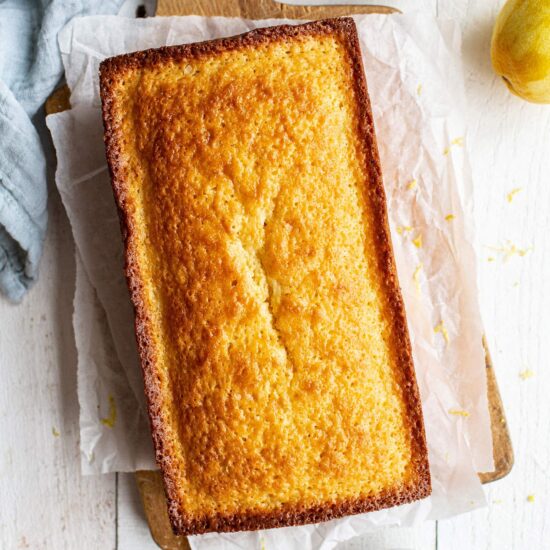
How to Prevent Cakes and Loaves from Sinking
This post may contain affiliate links. Read our disclosure policy.
There’s nothing more frustrating than spending time, energy, and money on a recipe only to have it not turn out correctly. This is especially demoralizing when you bake a layer cake or a loaf and it sinks in the center!
Sometimes it just slumps in the middle and you can salvage the results.
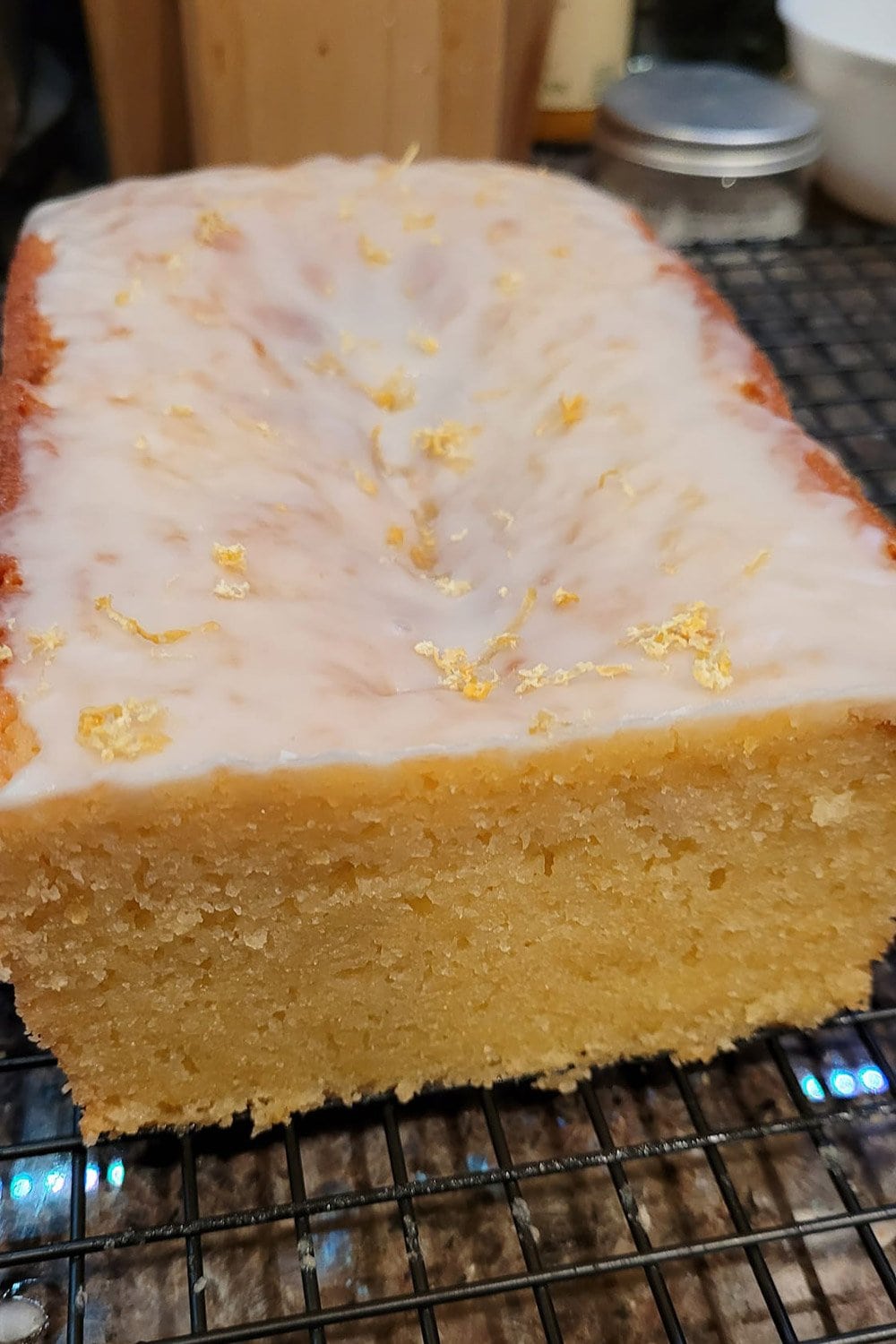
Other times it looks like a crater and is uncooked in the center and you have to throw it away.
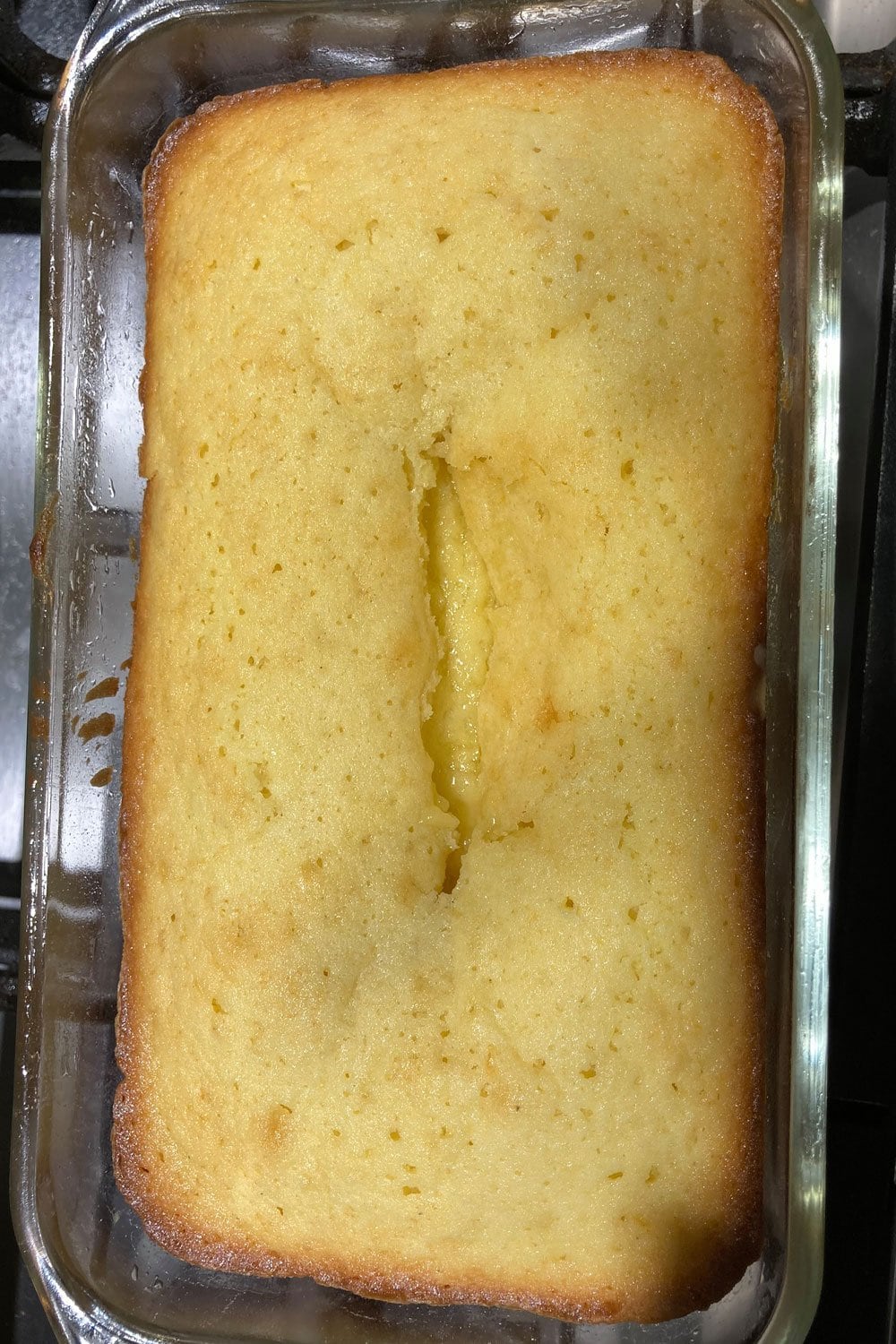
Believe me, I know how frustrating it can be! These are questions we see from HTH bakers all the time:
- Why does my banana bread sink in the center?
- Why does my lemon loaf collapse?
- Why did my cake sink after cooling?
This article will give you a quick list of how to prevent cakes and loaves from sinking, like in the pictures of sunken loaves from readers Kati and Mari above.
Why did my cake or loaf sink in the middle? #1 Reason: Your cake or quick bread loaf is underbaked.
This could be due to several factors, which are all outlined below!
How to Prevent Cakes and Loaves from Sinking
TIME
Be sure to bake for long enough! Instead of only relying on the baking time listed by the recipe, follow the sensory indicators written first and foremost. How long a loaf of banana bread or a yellow cake layer takes to bake in my kitchen, with my ingredients, in my oven, at my elevation, in my climate will likely be different than yours!
How to tell when a cake or loaf is done baking?
Use the sensory indicators given in the recipe and perform a toothpick or cake tester test. For most recipes, you want a small amount of moist crumbs or none at all. If your tester comes out with wetness or raw batter still clinging on, it’s not baked through and will likely sink.
The key to using a toothpick or cake tester is to insert into the center most point from the edges of the pan, probing directly into the middle. You don’t want it too deep that it’s touching the pan and not too shallow that it’s barely inserted.
If your cake or loaf has a very well developed exterior crust, that crust could actually scrape some of the crumbs off, giving you an inaccurate sense of doneness.
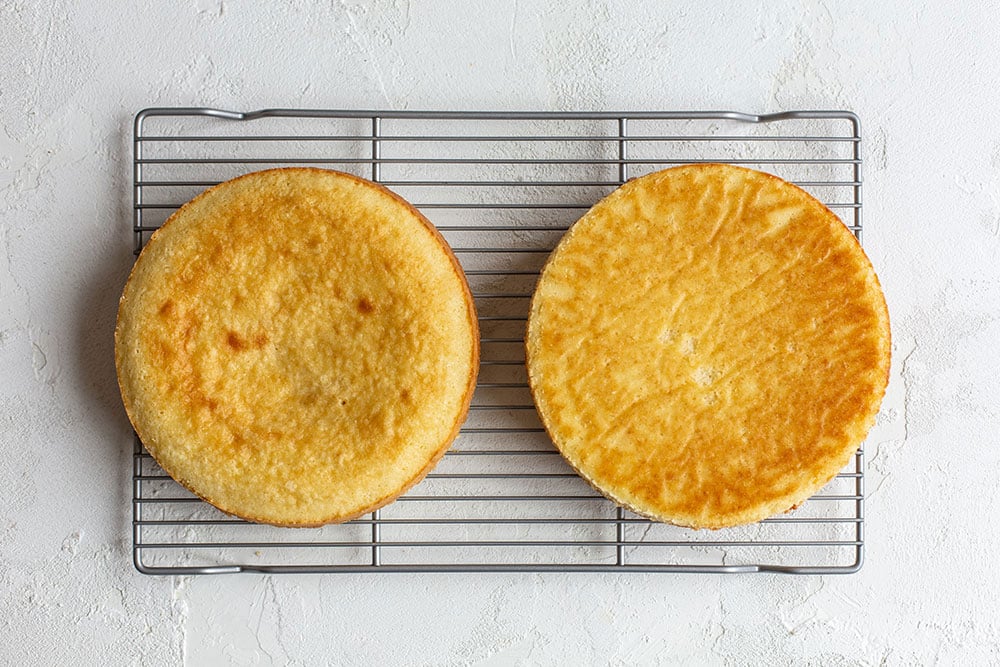
So what’s even better and more accurate than a cake tester or toothpick? An instant read thermometer! Quick breads like Banana Bread or Lemon Loaf are done when they reach an internal temperature of 200 to 205°F. Cakes are done when they reach an internal temperature of 205 to 210°F.
OVEN PROBLEMS
Accuracy
Some ovens run colder than others. If your oven isn’t up to temperature consistently during the baking time, you may experience sunken cakes or loaves. Use an oven thermometer to gauge the accuracy of your oven. At the very least, try waiting 10 minutes after the oven has beeped to signify it has preheated before actually baking anything. Most home ovens need more time to fully come to temperature. More on this in my Oven 101 article.
Opening & closing
If you open and close your oven door too many times during the baking process, you’ll lose the heat of the oven. Your product won’t be able to bake through completely. Only open your oven when testing for doneness when about to remove the product.
Slamming door
Slamming the oven door can collapse your cake or loaf. So can slamming down your pans after baking. Remove your cake or loaf from the oven carefully and gently place on the counter while cooling.
USING THE WRONG PAN
This tip applies to loaves specifically. For recipes like banana bread, lemon loaf, or pound cake, your best bet is to bake in a metal loaf pan. Metal is a quick and efficient conductor of heat. This helps to ensure your recipe will cook through the center and not collapse. Avoid using dark-colored pans as they brown way more quickly and aggressively.
Glass and ceramic are slower conductors of heat. In fact, I did an experiment baking a double batch of the same recipe of banana bread at the same time. The only difference? One loaf was baked in a metal pan and the other in a glass pan.
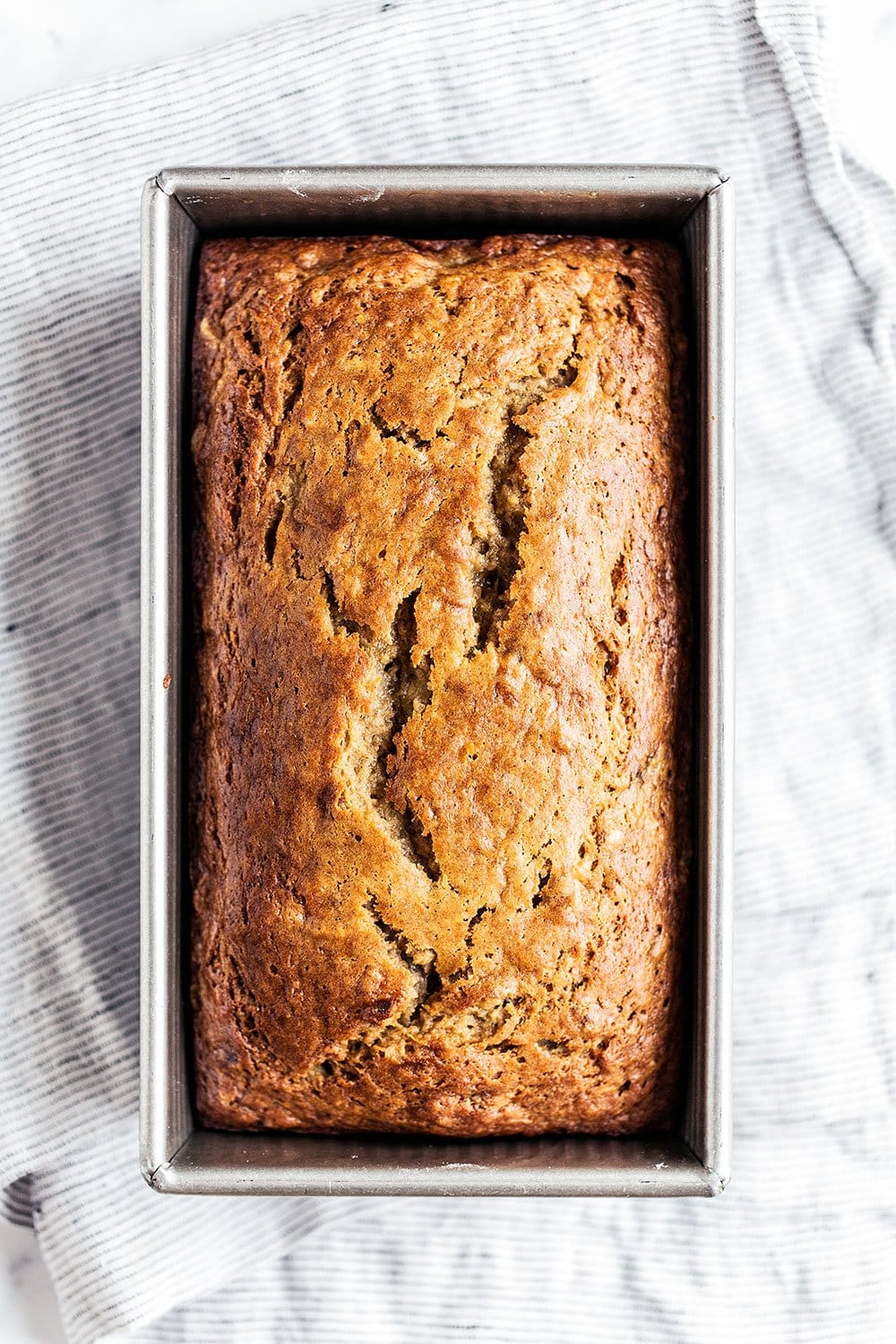
The glass loaf was on average 10°F cooler in the center than the banana bread baked in the metal loaf.
So if you use a glass pan, you’ll need to decrease your baking temperature to 325°F and increase your baking time by about 10 minutes. This will allow your loaves to bake through completely before the edges have dried out.
Lastly, it’s also important to use the same size pan as called for in the recipe. Using the wrong size pan can disrupt the product’s ability to rise and develop properly. This goes for width, height, and depth. Even an inch difference in diameter adds up. For example, an 8-inch cake pan holds 4 cups of batter and a 9-inch cake pan holds 5 cups of batter.
LEAVENING AGENT
There are three things that can cause your cakes or loaves to sink in relation to your leavening agent(s). These include baking soda and baking powder.
- Expired: If your baking soda or powder is expired it will not leaven your loaf or cake, causing it to sink in the center. It can expire or lose its effectiveness even before the expiration date. Learn how to test your baking soda and powder for freshness here.
- Too much: If you accidentally overmeasure your baking soda or powder it can also cause your cake or loaf to sink in the middle.
- High altitude: If you’re baking at a higher altitude you’ll need less leavening to achieve the same result as sea level. Without proper altitude adjustments, your products may sink.
OVERBEATING
For layer cakes, the key is to incorporate enough air during the butter + sugar creaming process to achieve a light and fluffy cake. This can be a fine balance. Incorporate too little air, and your cake won’t rise much. Incorporate too much, and your cake will collapse because it simply can’t hold onto all that air.
You don’t want to beat gradually at medium to medium-high speed. Avoid the temptation of cranking your mixer to the highest speed because the air needs to be incorporated somewhat gradually. The key? Find your mixer’s perfect speed (each brand, model, and machine is unique) and beat for about 4 to 7 minutes.
If you beat too much once the wet and dry ingredients combine, this can add too much additional air or collapse the air bubbles inside the batter. This can also lead to more gluten development than intended for the recipe, yielding a rubbery texture.
For quick breads and loaves, you want to stir very lightly once the wet and dry ingredients are combined. You don’t want to activate the webs of gluten more than the recipe is equipped to handle.
What to Do If Your Cake Sunk
If your cake layers have already sunk or slightly collapsed in the center, here are some ideas for fixing them.
Minor Sinking:
To salvage a small amount of sinking, you’ll just use your buttercream to level out the cake. Place one layer sunken side up. Use a generous amount of frosting for the filling. Place the second layer flat side up.
Moderate Sinking:
If your cake is noticeably sunken in the center but is still cooked through, use a cake leveler to even it out. A cake leveler makes quick and easy work of creating a perfectly even cake layer. If you don’t have one, you can also use a serrated knife.
Major Sinking:
If your cake has completely collapsed in the center and is raw or underdone in the center, there are still a few options to salvage it. You could always cut the cooked sections of the cake up into cubes and make a trifle. Or even make cake pops.
Another alternative is to use a paring knife or cookie cutter to remove the centermost part of the cake which is sunken. Fill that part with fruit, candies, or buttercream for a ‘surprise inside’ cake.
What To Do If Your Quick Bread Loaf Sunk
Unfortunately, there are a few less options to fix an already sunken loaf of quick bread and still maintain a beautiful-looking result. A few ideas on how to rescue a collapsed loaf are below.
Minor sinking:
If your loaf is just slightly sunken in the center instead of domed, you can opt to distract with a glaze or frosting.
Moderate to major sinking:
If your loaf is noticeably sunken in the center and undercooked, you can slice and toast the center pieces to firm up any gooeyness. Smear with butter or even peanut butter or nutella… or ice cream! You could also make French toast with these slices.
If you don’t want the texture of toasted banana bread, you can also take a center undercooked slice, wrap in a wet paper towel, and microwave until cooked through.
Another idea is to cube up the banana bread to make a rich bread pudding.
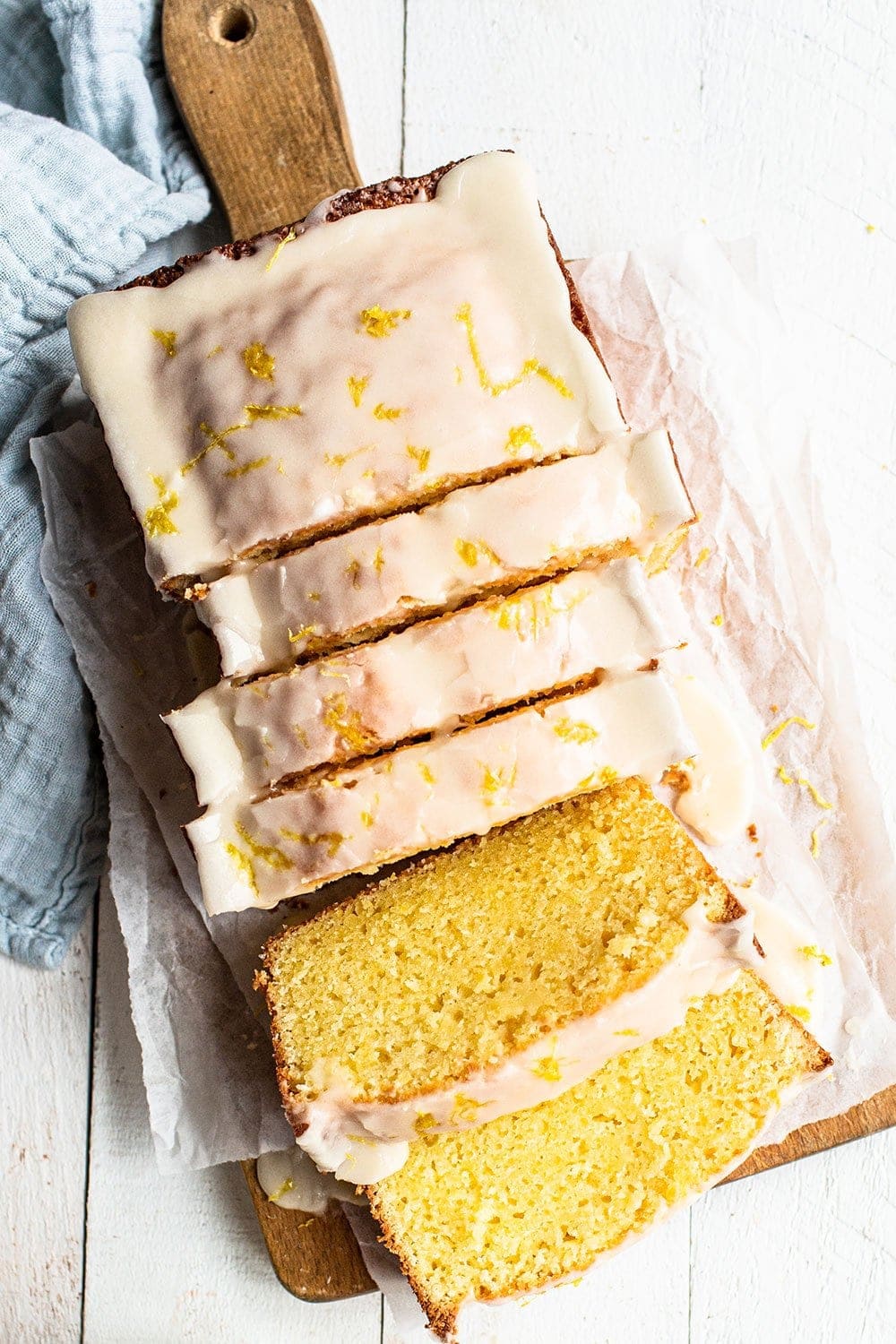
Photos by Ashley McLaughlin (the non-sunken ones ;)).
More Science of Baking Articles:
About Tessa...
I share trusted baking recipes your friends will LOVE alongside insights into the science of sweets. I'm a professionally trained chef, cookbook author, and cookie queen. I love to write about all things sweet, carb-y, and homemade. I live in Phoenix, Arizona (hence the blog name!)
Leave a Comment & Rating
Add a Review or Question
© Handle the Heat - handletheheat.com
Join the Handle the Heat Community
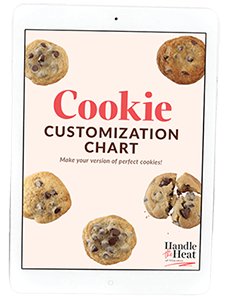
Instead of digging through cookbooks and magazines and searching the internet for amazing recipes, subscribe to Handle the Heat to receive new recipe posts delivered straight to your email inbox. You’ll get all the latest recipes, videos, kitchen tips and tricks AND my *free* Cookie Customization Guide (because I am the Cookie Queen)!

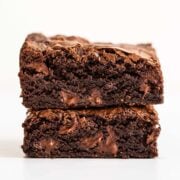


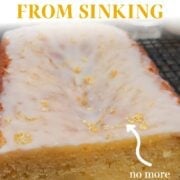

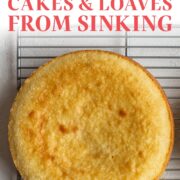



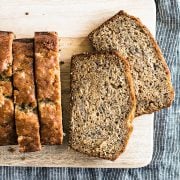
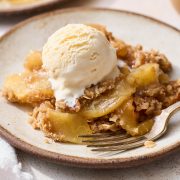
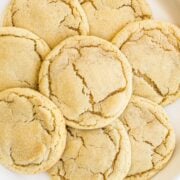
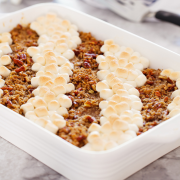

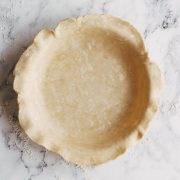
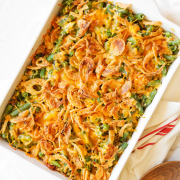
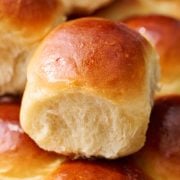
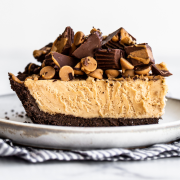

Thank you!!
I made mini loaves of zucchini bread and they sunk in the middle. I beat the eggs until frothy and hand mixed all the rest of the ingredients with a wooden spoon. What would cause them to sink?
Hi Loretta! Without knowing the exact recipe and its instructions, I’m not sure exactly what happened here – but I can give you a few thoughts that may help next time! AS Tessa mentions in this article, the loaves may have been underbaked and not quite done in the middle. Tessa mentions the temperatures the centers of baked goods should reach in the article above. It also could have been your leavening agent. As Tessa also mentions in the article above, if your baking/soda powder are not fresh, they won’t do their jobs and your baked goods may not rise properly, or sink after baking. Tessa talks about the science behind leavening agents, and how to test for leavener freshness, in this article here! Lastly, if you don’t have an oven thermometer to ensure your oven is at the temperature it says it is, invest in one now! They are inexpensive and really help your baking so much! This oven thermometer is one of Tessa’s favorites. I hope something here helps, Loretta! Happy baking!
Wow
Finally I found the answer
This has been very helpful.
I finally bought a good instant read thermometer and no longer have to deal with collapsed cake.
Even with a slow oven and a deceptively dry toothpick.
Why doesn’t every recipe say Bake til internal temp is ….?
Yay! So happy this article helped you out!
Thank you, very useful tips.
Great Ideas on how to salvage a cake! Thank You!
Thanks for the feedback, Gail!
Thank you! This is really one of my more frustrating failures. Sinking pound type cakes. Once is was a lemon cake made with cake flour. Then I decided to add whole cranberries. The whole thing sank, berries and all. Probably should have chopped up the berries and used half reg flour. Also cooked it longer. I cut it up and we ate the chunks in cute desert cups. I will be using my instant read for sure next time!
And there are those beautiful banana breads you proudly take out of the oven only to slowly watch it sink in front of your shocked and disappointed face. It makes you feel so helpless, like you want to save it.
So incredibly frustrating!! Cake flour with the whole cranberries could possibly have been the issue. I don’t know what recipe you used, but you sound like you know what you’re doing in the kitchen and I’ll bet your idea will work to give it some more structural support next time. Glad you were able to salvage it though! I’m sure it tasted delicious 🙂
Thank you so much for these tips…really helpful
Wonderful to hear! I’m happy to help!
Thank you so much for these tips…really helpful
Maureen
Helpful ideas, as usual. Thank you!
Thanks, Carol! I appreciate you letting me know 🙂
Can’t wait for my cookbook! Love the tips!! Keep them coming!
Thanks, Carol, will do! So excited for you to receive your cookbook 🙂